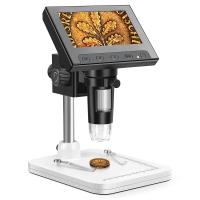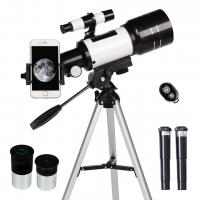Why Are Microscopes Useful ?
Microscopes are useful because they allow us to see objects that are too small to be seen with the naked eye. They magnify the image of the object, enabling us to study its structure, composition, and behavior in detail. Microscopes are widely used in various scientific fields, including biology, medicine, chemistry, and materials science. They have revolutionized our understanding of the microscopic world and have contributed to numerous scientific discoveries and advancements. By providing a closer look at cells, microorganisms, and tiny particles, microscopes have helped in the development of new medicines, improved diagnostic techniques, and enhanced our knowledge of the natural world.
1、 Magnification: Enlarging objects for detailed observation.
Microscopes are incredibly useful tools in various fields of science, research, and medicine. One of the primary reasons why microscopes are valuable is their ability to magnify objects for detailed observation. By enlarging the size of tiny specimens, microscopes allow scientists and researchers to study their intricate structures and characteristics that would otherwise be invisible to the naked eye.
Magnification is a fundamental feature of microscopes that enables scientists to explore the microscopic world. With the advancement of technology, microscopes now offer higher magnification capabilities, allowing for even more detailed examination of specimens. This increased magnification has revolutionized fields such as biology, chemistry, and materials science, enabling scientists to uncover new information and make groundbreaking discoveries.
In the field of biology, microscopes have played a crucial role in understanding the complexities of living organisms. They have allowed scientists to study the intricate structures of cells, tissues, and organs, leading to advancements in medical research, disease diagnosis, and treatment development. Microscopes have also been instrumental in the study of microorganisms, helping scientists understand their behavior, interactions, and impact on human health and the environment.
In addition to magnification, modern microscopes often come equipped with advanced imaging techniques such as fluorescence, confocal, and electron microscopy. These techniques provide researchers with enhanced visualization and analysis capabilities, allowing them to study specific components within a specimen, track cellular processes, and even observe live samples in real-time.
Furthermore, microscopes have become more accessible and user-friendly over time, making them valuable tools not only in research laboratories but also in educational settings. Students can now explore the microscopic world and gain a deeper understanding of various scientific concepts through hands-on microscopy experiments.
In conclusion, microscopes are incredibly useful due to their ability to magnify objects for detailed observation. The advancements in magnification capabilities and imaging techniques have revolutionized scientific research, enabling scientists to explore the microscopic world and make significant discoveries. Microscopes continue to play a vital role in various fields, from biology and medicine to materials science and beyond, and their accessibility has made them valuable tools for education as well.
2、 Resolution: Enhancing clarity and distinguishing fine details.
Microscopes are incredibly useful tools in various scientific fields, as they allow us to observe and study objects that are too small to be seen with the naked eye. One of the key reasons why microscopes are useful is their ability to enhance resolution, thereby improving clarity and distinguishing fine details.
Resolution refers to the ability of a microscope to distinguish between two closely spaced objects as separate entities. By using lenses and advanced imaging techniques, microscopes can magnify objects and increase the level of detail that can be observed. This is particularly important when studying microscopic organisms, cells, tissues, or even nanoscale structures.
Enhancing resolution is crucial in many scientific disciplines. For example, in biology and medicine, microscopes are used to examine cells and tissues, allowing researchers and medical professionals to identify abnormalities, study cellular processes, and diagnose diseases. In materials science, microscopes help analyze the structure and properties of materials at the atomic and molecular level, aiding in the development of new materials with specific properties.
Moreover, the latest advancements in microscopy technology have further improved resolution and expanded the capabilities of microscopes. Techniques such as confocal microscopy, electron microscopy, and super-resolution microscopy have revolutionized the field, enabling scientists to visualize structures and processes with unprecedented detail. These advancements have opened up new avenues of research and have contributed to breakthroughs in various scientific disciplines.
In conclusion, microscopes are useful tools due to their ability to enhance resolution, allowing for improved clarity and the ability to distinguish fine details. The latest advancements in microscopy technology have further expanded the capabilities of microscopes, enabling scientists to explore the microscopic world with greater precision and depth.
3、 Visualization: Revealing structures and organisms not visible to the naked eye.
Microscopes are incredibly useful tools that have revolutionized the field of science and have contributed to numerous discoveries and advancements. One of the primary reasons why microscopes are useful is their ability to provide visualization of structures and organisms that are not visible to the naked eye.
Microscopes allow scientists to observe and study objects at a microscopic level, revealing intricate details and structures that would otherwise remain hidden. This visualization capability has been crucial in various scientific disciplines, including biology, medicine, chemistry, and materials science. By magnifying objects, microscopes enable scientists to explore the intricate world of cells, microorganisms, and even nanoscale materials.
In the field of biology, microscopes have played a pivotal role in understanding the complexity of living organisms. They have allowed scientists to observe and study the intricate structures of cells, such as organelles and cellular processes, leading to breakthroughs in our understanding of life itself. Microscopes have also been instrumental in the discovery of microorganisms, including bacteria and viruses, which are too small to be seen with the naked eye.
Moreover, microscopes have advanced significantly over the years, with the development of advanced techniques such as electron microscopy and confocal microscopy. These techniques have further enhanced the visualization capabilities of microscopes, allowing scientists to explore even smaller structures and obtain high-resolution images.
In recent years, microscopes have also found applications beyond traditional scientific research. They are now used in various industries, such as materials science and forensics, to analyze and characterize materials at a microscopic level. This has led to advancements in fields like nanotechnology and the development of new materials with unique properties.
In conclusion, microscopes are incredibly useful tools due to their ability to visualize structures and organisms that are not visible to the naked eye. They have revolutionized scientific research, enabling breakthroughs in various disciplines and contributing to our understanding of the microscopic world. With ongoing advancements in microscopy techniques, microscopes continue to be indispensable in scientific exploration and discovery.
4、 Research: Facilitating scientific discoveries and advancements in various fields.
Microscopes are incredibly useful tools in scientific research, facilitating discoveries and advancements in various fields. They allow scientists to observe and study objects and organisms at a microscopic level, providing valuable insights into their structure, behavior, and function.
One of the primary reasons why microscopes are useful is their ability to magnify objects, allowing scientists to see details that are otherwise invisible to the naked eye. This is particularly important in fields such as biology, where the study of cells and microorganisms is crucial. Microscopes enable researchers to examine the intricate structures of cells, identify different types of microorganisms, and understand their functions within living organisms.
Moreover, microscopes have played a significant role in medical research and diagnostics. They have helped in the identification and understanding of various diseases, allowing for more accurate diagnoses and the development of effective treatments. For example, the discovery of bacteria and viruses through microscopes has revolutionized the field of infectious diseases and led to the development of vaccines and antibiotics.
In recent years, advancements in microscopy technology have further enhanced their usefulness. Techniques such as electron microscopy and confocal microscopy have allowed for even higher magnification and resolution, enabling scientists to study objects at an atomic level. This has opened up new avenues of research in fields like nanotechnology and materials science.
Furthermore, microscopes have become more accessible and user-friendly, allowing researchers from diverse backgrounds to utilize them in their work. This has led to interdisciplinary collaborations and the integration of microscopy in various scientific disciplines, leading to new discoveries and advancements.
In conclusion, microscopes are invaluable tools in scientific research, enabling scientists to explore the microscopic world and make significant discoveries. Their usefulness extends across various fields, from biology and medicine to materials science and nanotechnology. With ongoing advancements in microscopy technology, we can expect even more exciting breakthroughs in the future.
























There are no comments for this blog.